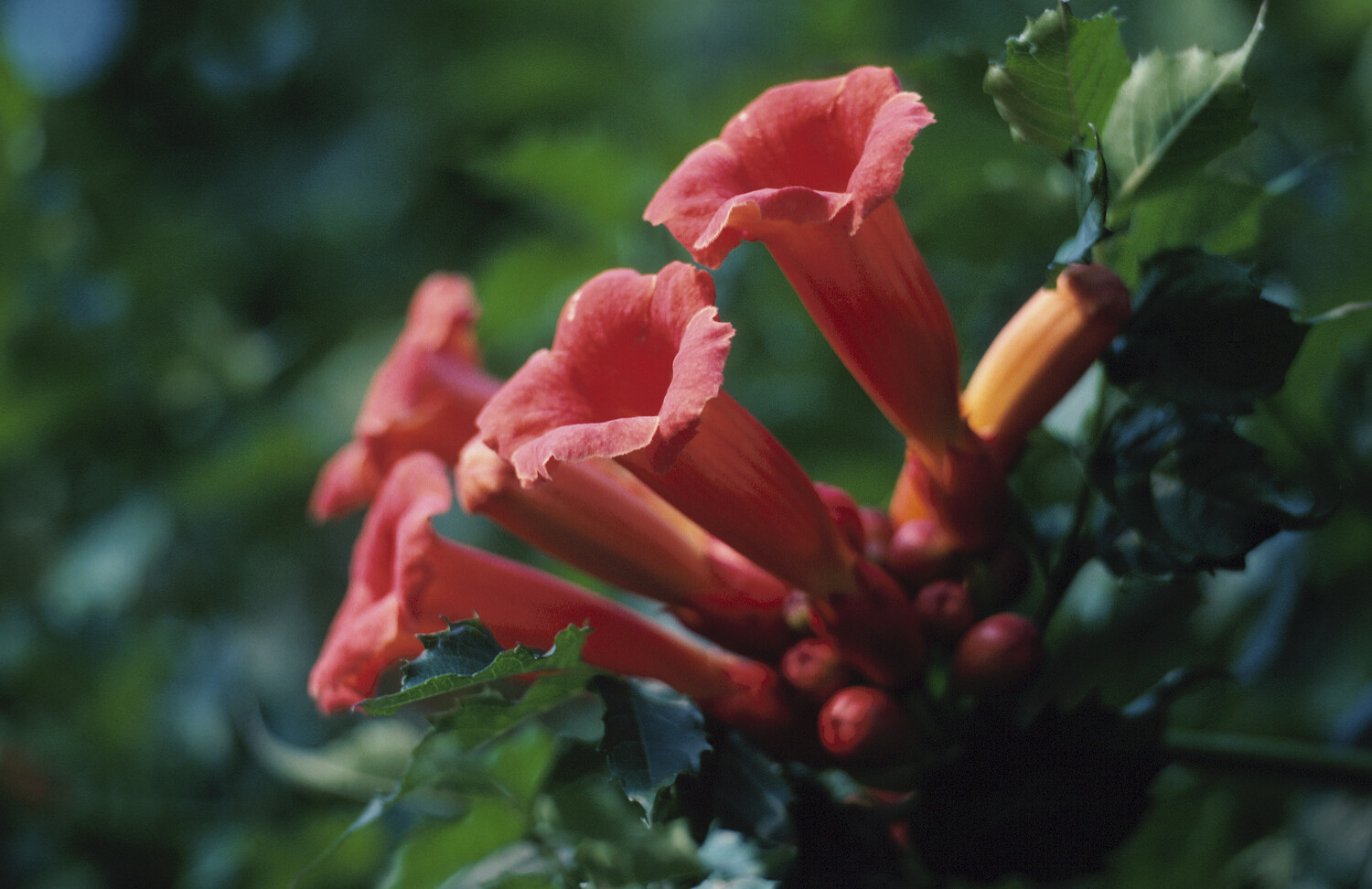
Trumpet vine, also known as Campsis radicans, is a fascinating and captivating plant that has enchanted gardeners and nature lovers for ages. With its beautiful trumpet-shaped flowers and vigorous growth habit, this plant is a true showstopper in any garden or landscape. But beyond its aesthetic appeal, trumpet vine also has some intriguing facts that make it even more interesting.
In this article, we will unveil nine fascinating facts about trumpet vine that will surely pique your curiosity. From its origin and unique characteristics to its benefits and potential drawbacks, we’ll explore everything you need to know about this remarkable plant. So, whether you’re an avid gardener or simply intrigued by the wonders of nature, join us on this journey as we unravel the secrets of the trumpet vine.
Key Takeaways:
- Trumpet Vine is a fast-growing plant that attracts hummingbirds with its vibrant flowers. It can reach impressive heights and is drought-tolerant, but it can also be invasive if not controlled.
- The trumpet vine belongs to the Bignoniaceae family and has medicinal uses. It can be easily propagated through stem cuttings or seeds, making it easy to add more to your garden.
Trumpet Vine is a Fast-Growing Climbing Plant
One of the most fascinating characteristics of the trumpet vine is its rapid growth. It is known for its vigorous climbing ability, quickly covering walls, trellises, and fences with its lush green foliage and vibrant trumpet-shaped flowers.
Trumpet Vine Attracts Hummingbirds
The bright and striking trumpet-shaped flowers of the trumpet vine are irresistible to hummingbirds. Their long beaks perfectly fit into the narrow flower tubes, allowing them to feed on the nectar inside. This symbiotic relationship benefits both the trumpet vine and the hummingbirds.
Trumpet Vine Can Reach Impressive Heights
If left unchecked, trumpet vine can grow to be quite tall. It has been known to reach heights over 30 feet, making it an excellent choice for adding vertical interest to your garden or landscape.
Trumpet Vine Blooms in Vibrant Colors
The flowers of the trumpet vine come in a wide range of vibrant hues, including shades of red, orange, and yellow. These colorful blooms add a burst of life and attract attention from both humans and pollinators.
Trumpet Vine is Drought-Tolerant
One of the remarkable qualities of the trumpet vine is its ability to withstand periods of dryness. It has adapted to survive in arid conditions, making it a resilient and low-maintenance plant choice for hot climates.
Trumpet Vine Can Be Invasive
While trumpet vine can be a beautiful addition to the landscape, it should be noted that it can also be invasive. Its vigorous growth and ability to spread quickly through its seeds and underground runners can make it difficult to control.
Trumpet Vine Belongs to the Bignoniaceae Family
The trumpet vine, scientifically known as Campsis radicans, is a member of the Bignoniaceae family. This family includes several other flowering plants known for their spectacular blooms and climbing abilities.
Trumpet Vine Has Medicinal Uses
In traditional medicine, various parts of the trumpet vine are used for their potential medicinal properties. It has been used to treat conditions such as asthma, inflammation, and various skin ailments. However, it is essential to consult with a healthcare professional before using any plant for medicinal purposes.
Trumpet Vine Can Be Propagated Easily
If you want to add more trumpet vines to your garden, you’re in luck! This plant can be easily propagated through stem cuttings or by collecting and planting its seeds. With proper care, these cuttings or seeds can quickly develop into new plants.
Conclusion
Trumpet vine, also known as Campsis radicans, is a fascinating and versatile plant that deserves a place in any garden or landscape. With its beautiful trumpet-shaped flowers and fast growth rate, it adds a touch of vibrancy and elegance to any space. From its ability to attract hummingbirds to its historical and cultural significance, trumpet vine continues to captivate plant enthusiasts and gardeners alike.
Whether you’re an avid gardener or simply appreciate the beauty of plants, learning about trumpet vine and its intriguing facts can deepen your appreciation for this remarkable species. So, consider adding trumpet vine to your garden and enjoy the many benefits it has to offer!
FAQs
1. How fast does the trumpet vine grow?
The trumpet vine is a fast-growing plant that can grow up to 35 feet in one season under optimal conditions.
2. Does trumpet vine attract hummingbirds?
Yes, trumpet vine is highly attractive to hummingbirds due to its vibrant trumpet-shaped flowers and nectar content.
3. Can trumpet vine be grown in pots or containers?
While trumpet vine is typically grown in the ground, it can be grown in large containers or pots. However, it’s important to provide adequate support for the vine to climb.
4. Does the trumpet vine require a lot of maintenance?
Trumpet vine is a relatively low-maintenance plant. However, regular pruning is necessary to prevent it from becoming too invasive and to maintain its desired shape.
5. Is trumpet vine suitable for all climates?
Trumpet vine is native to the southeastern United States and thrives in warm climates. It can also grow in cooler regions but may require extra protection during winter.
6. Are trumpet vine flowers fragrant?
While trumpet vine flowers are visually stunning, they do not have a strong fragrance.
7. Can trumpet vine damage structures?
Due to its strong growth and ability to cling onto surfaces, trumpet vine can damage structures such as fences, walls, or buildings if not properly managed.
8. How often should trumpet vine be watered?
Trumpet vine is drought-tolerant once established and does not require frequent watering. However, during hot, dry spells, regular watering is recommended.
9. Can trumpet vine be propagated from cuttings?
Yes, trumpet vine can be propagated from both softwood and hardwood cuttings, making it relatively easy to propagate and share with others.
Was this page helpful?
Our commitment to delivering trustworthy and engaging content is at the heart of what we do. Each fact on our site is contributed by real users like you, bringing a wealth of diverse insights and information. To ensure the highest standards of accuracy and reliability, our dedicated editors meticulously review each submission. This process guarantees that the facts we share are not only fascinating but also credible. Trust in our commitment to quality and authenticity as you explore and learn with us.


